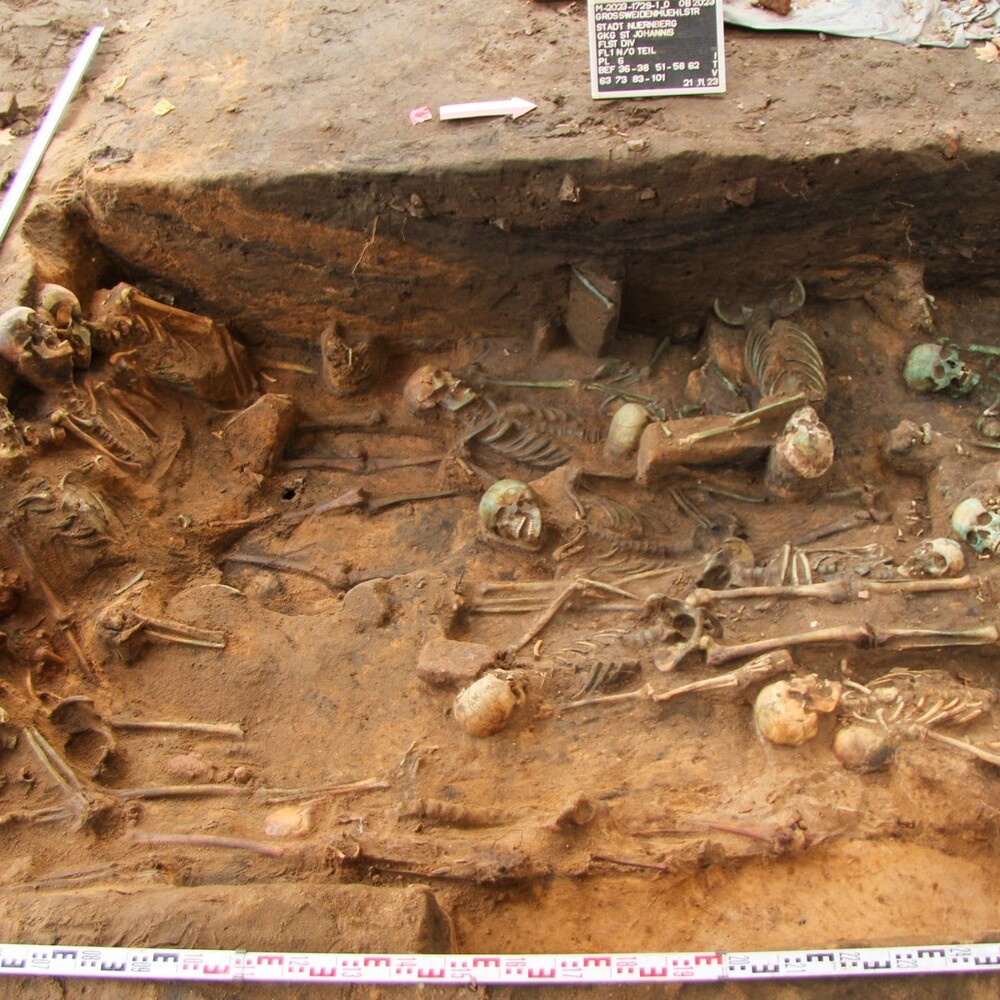The largest mass grave of plague victims discovered in Germany (8 photos)
Nuremberg, like many European cities during the Middle Ages, experienced outbreaks of the plague, also known as the Black Death. Therefore, it is not surprising that workers, digging a site for the construction of a nursing home, discovered skeletons. But what took archaeologists by surprise was the number of burials. 

"Historical documents indicate that plague cemeteries were located outside the city in the direction of Rohusfriedhof and Johannis. Apparently, a cemetery in Johannis has been found," said Nuremberg Mayor Markus König.
"The graves contain the remains of children and old people, men and women; the plague did not take into account either age or social status. For the first time for a city of such importance as Nuremberg, it is possible to carry out an empirically reliable analysis of a large group of the population of that period," he added . 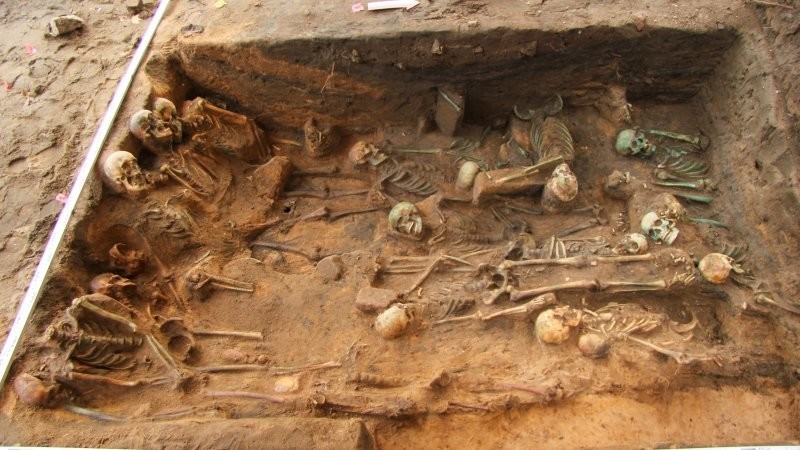
The largest mass grave of victims of a 17th century epidemic to date has been discovered. The team counted at least 1,000 skeletons stacked in 7 rows on top of each other. 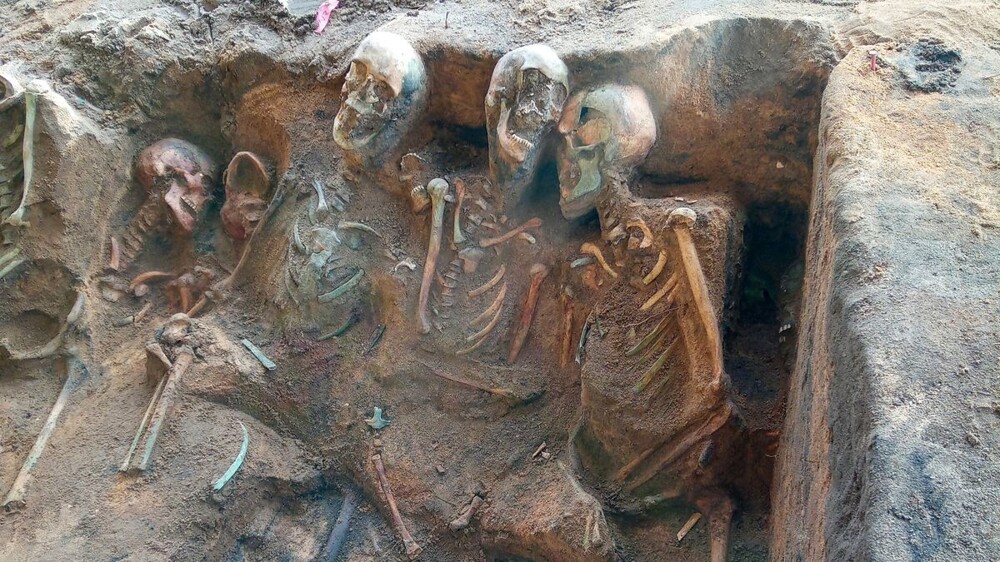
Some of the bones are damaged due to bombs dropped nearby during World War II. In addition, many of the remains had turned green due to waste leaking from a nearby copper plant.
“The find blew us all away,” said Melanie Langbein of the Nuremberg Monument Conservation Service. 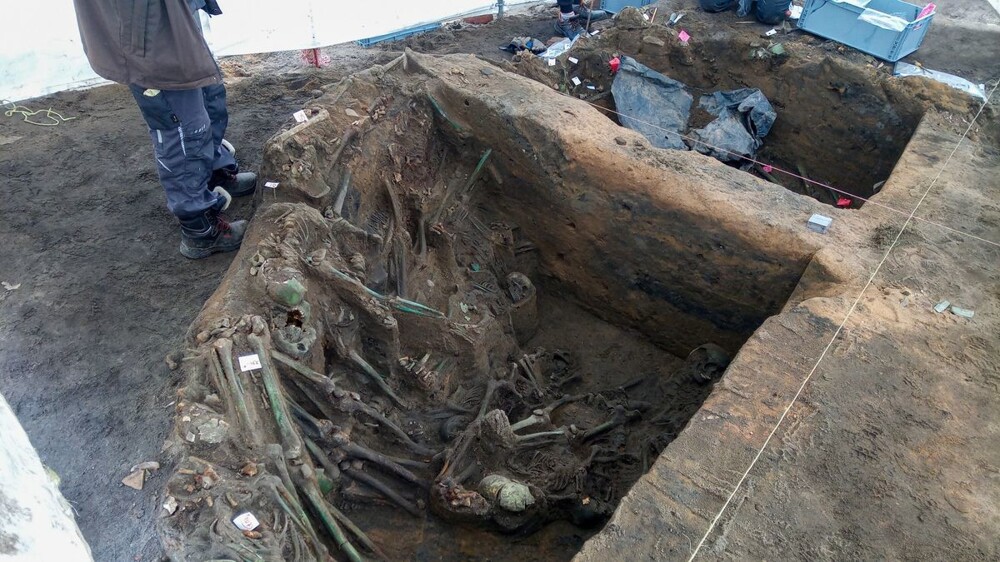
Since the 14th century, outbreaks of plague occurred in Nuremberg approximately every 10 years.
Experts have discovered a record from 1634 detailing an epidemic that killed more than 15,000 people between 1632 and 1633. 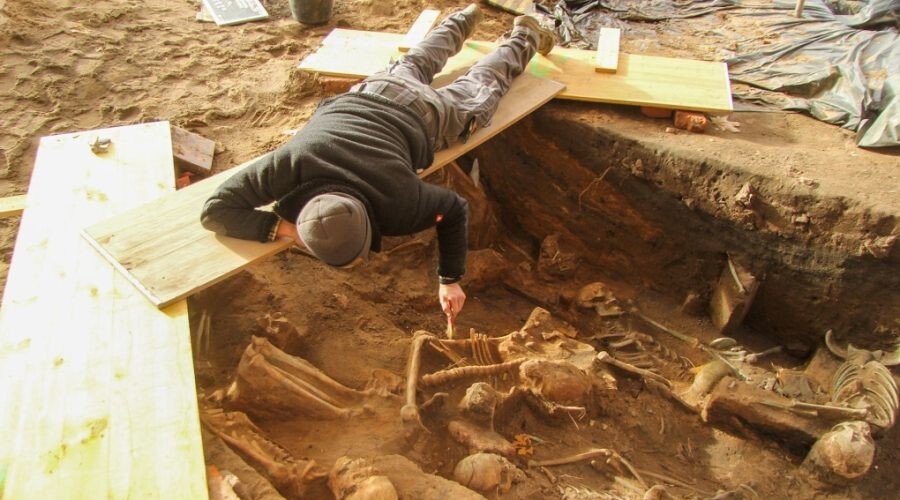
During burial, the bodies were not laid out in accordance with Christian customs, which place the deceased on their backs, facing east. It was necessary to save space and quickly get rid of infectious bodies. Children were sometimes squeezed between adults. 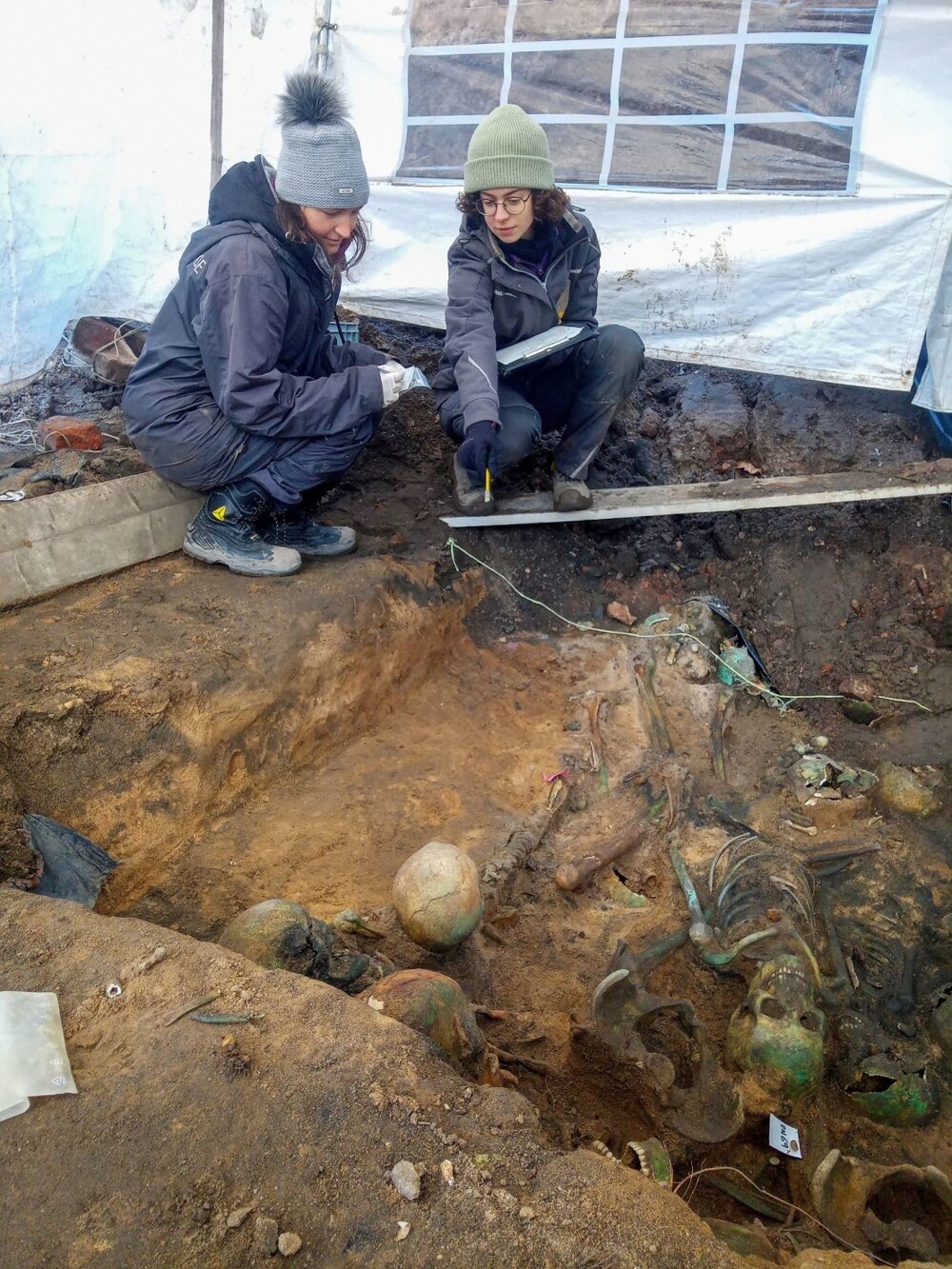
Some bodies were simply wrapped in cloth, while others were clothed, allowing archaeologists to find buttons, hooks, and buckles. 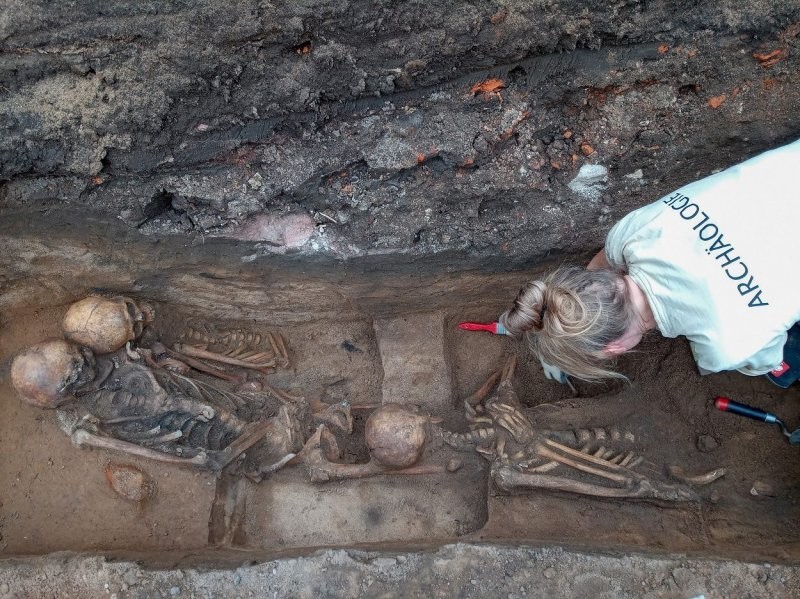
The plague struck the world in three waves between the 1300s and 1900s, killing millions of people.
The first wave, called the Black Death, took place from 1347 to 1351, the second in the 1500s led to the emergence of a new strain, and the last spread throughout Asia in the late 1800s. 